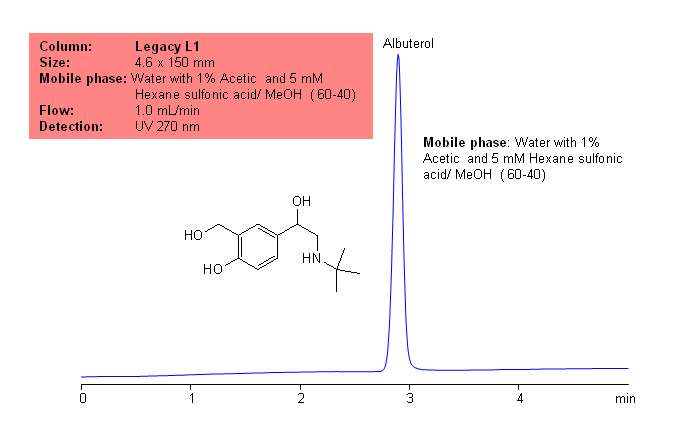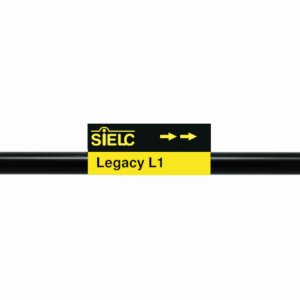
Application Notes: Albuterol is a well known drug used to treat bronchospasms. Albuterol come in many different forms, ranging from nebulizer to tablets. Albuterol is an important drug in combatting breathing problems. The USP methods for albuterol dictate that albuterol should not contain less than 98.5% and no more than 101% calculated on a dried basis. The USP HPLC method for the separation of albuterol was developed on Legacy L1 column according to the US Pharmacopeia methodology. L1 classification is assigned to reversed-phase HPLC column containing C18 ligand. Support for the material is spherical silica gel with particles size 3-10 um and pore size of 100-120A. Resolution between critical pairs corresponds to rules and specifications of USP.
Application Columns: Legacy L1 C18 HPLC column
Application compounds: Albuterol
Mobile phase: Water with 1% acetic acid and 5mM hexane sulfonic acid and MeOH (60:40)
Detection technique: UV
Reference: USP35: NF30
| Column | Legacy L1, 4.6×150 mm, 5 µm, 100A |
| Mobile Phase | Water with 1% Acetic and 5 mM Hexane sulfonic acid/ MeOH ( 60-40) |
| Buffer | Acetic Acid, Hexane sulfonic acid |
| Flow Rate | 1.0 ml/min |
| Detection | UV, 270 nm |
| Class of Compounds |
Drug, Bronchodilator, Hydrophobic, Ionizable |
| Analyzing Compounds | Albuterol |
Application Column
Legacy L1
SIELC's family of Legacy columns is based on the United States Pharmacopeia's (USP) published chromatographic methods and procedures. Numerous brands have columns used in USP reference standards and methods. USP has created various designations to group together columns with similar types of packing and properties in the solid phase. SIELC's Legacy columns adhere to these strict requirements and properties, allowing you to easily replace older columns that are no longer available without needing to significantly modify your method or SOPs.
Select options




